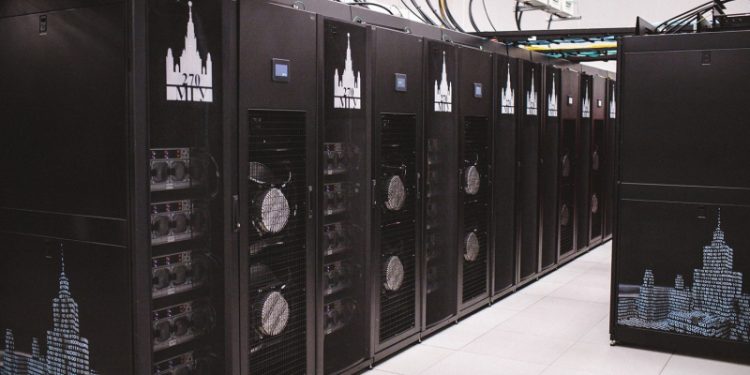TL;DR:
- Lomonosov Moscow State University (MSU) introduces MSU-270, a groundbreaking supercomputer with a peak power of 400 ‘AI’ PetaFLOPS.
- Equipped with around 100 cutting-edge graphics accelerators, MSU-270 heralds a new era in AI and high-performance computing (HPC).
- MSU strategically aligns with its long-term advancements plan, fueling technological progress by 2030.
- The origin of the ‘latest graphics accelerators’ remains undisclosed, adding an air of mystery to the project.
- Russia’s top-tier supercomputer achieves 400 PetaFLOPS through ‘AI’ computations, possibly FP16 data format.
- MSU-270’s potential FP64 performance remains undisclosed, raising anticipation for its impact on the country’s technological landscape.
- The supercomputer’s significance extends beyond AI, influencing research across fields like physics, chemistry, and medicine.
- MSU’s academic program, coupled with the supercomputer, fosters AI talent, offering an array of innovative opportunities.
- Integration into Russia’s scientific supercomputing network broadens MSU-270’s influence and utility.
Main AI News:
In a groundbreaking move, Lomonosov Moscow State University (MSU) has ushered in a new era of technological prowess with the launch of its latest supercomputer, the MSU-270. Boasting an impressive peak computational power of 400 ‘AI’ PetaFLOPS, this cutting-edge marvel is poised to redefine the landscape of artificial intelligence (AI) and high-performance computing (HPC) applications.
The MSU-270, a masterpiece of innovation, derives its might from an array of approximately 100 state-of-the-art graphics accelerators. This computational colossus is backed by innovative energy supply systems, advanced cooling mechanisms, and seamless communication networks. Notably, MSU remains tight-lipped about the origin of these graphics accelerators, leaving the technology enthusiasts intrigued.
Viktor Sadovnichy, the luminary at the helm of MSU, articulated the significance of this ambitious undertaking, stating, “We have embarked upon a journey of immense possibilities.” The grand unveiling transpired at the hallowed halls of the Faculty of Computational Mathematics and Cybernetics, where Sadovnichy declared the MSU-270 operational.
This monumental stride aligns harmoniously with MSU’s strategic trajectory, aiming for substantial advancements by 2030. While Russia’s GPU landscape may not be as prominent as some of its counterparts, it is speculated that the MSU-270 harnesses computational GPUs from industry leaders such as AMD, Biren Technology, Intel, or Nvidia. It is noteworthy that the recent U.S. export regulations have limited the delivery of highest-tier GPUs from AMD and Nvidia to Russia and China.
A force to be reckoned with, the MSU-270 amasses an awe-inspiring computational prowess of 400 PetaFLOPS. However, it’s essential to discern that these achievements are facilitated through the realm of ‘AI’ PetaFLOPS, often associated with the FP16 data format. MSU’s most powerful supercomputer to date, boasting an Rmax performance of around 21.5 FP64 PetaFLOPS and an Rpeak performance of nearly 29.5 FP64 PetaFLOPS, pales in comparison. The specifics of the MSU-270’s FP64 performance remain undisclosed, yet it undoubtedly signifies a momentous advancement for the nation.
The MSU-270 is poised to spearhead the creation of groundbreaking AI tools, encompassing data analysis algorithms and mechanisms for safeguarding AI services. Beyond the realm of AI, its capabilities extend to various scientific domains encompassing physics, chemistry, biology, psychology, sociology, geology, and medicine. This supercomputer is primed to reshape research landscapes, foster education, and refine the training of AI experts.
In the words of Igor Sokolov, the visionary Dean of the Faculty of Computational Mathematics and Cybernetics, “Our academic program has garnered global recognition for nurturing AI talent.” With a strong emphasis on fundamental knowledge, the program shapes adept individuals equipped to forge the future. Sokolov elaborates, “This computer shall amplify and broaden the scope of specialist training—a mission of paramount importance.”
Conclusion:
The launch of the MSU-270 signifies a monumental leap for Russia’s AI and HPC capabilities. This advancement has the potential to reshape the market by accelerating AI innovation, fostering multidisciplinary research, and nurturing a skilled workforce, thereby propelling the nation into a competitive stance within the global technology landscape.

